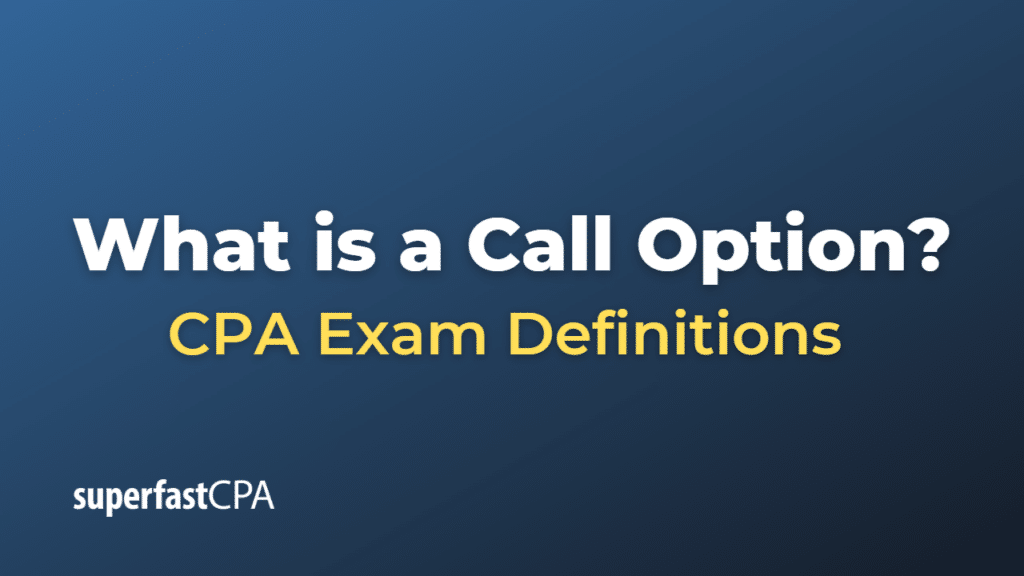Call Option
A call option is a financial contract that gives the buyer (holder) of the option the right, but not the obligation, to buy an underlying asset at a predetermined price (called the strike price) within a specific period or on a specific date (the expiration date). The seller (writer) of the call option is obligated to sell the underlying asset to the buyer if the buyer chooses to exercise the option.
Call options are a type of derivative security, as their value is derived from the value of the underlying asset, which can be stocks, bonds, commodities, currencies, or other financial instruments. Investors can use call options for various purposes, such as speculating on the price movement of an asset, hedging an existing position, or generating income through option premiums.
Here are some key terms related to call options:
- Premium: The price the buyer pays to the seller to acquire the call option. This premium compensates the seller for taking on the risk of the potential obligation to sell the underlying asset at the strike price.
- Strike price: The predetermined price at which the buyer can purchase the underlying asset if they decide to exercise the call option.
- Expiration date: The date on which the option contract expires. If the buyer does not exercise the call option before the expiration date, the option becomes worthless, and the buyer loses the premium paid.
- In-the-money (ITM): A call option is considered in-the-money when the underlying asset’s market price is above the strike price. In this case, exercising the option would result in a profit.
- Out-of-the-money (OTM): A call option is considered out-of-the-money when the underlying asset’s market price is below the strike price. In this case, exercising the option would result in a loss, and the buyer would likely let the option expire worthless.
Call options can be traded on various exchanges, and their prices are influenced by factors such as the underlying asset’s price, the time remaining until expiration, the strike price, and market volatility.
Example of a Call Option
Let’s consider a hypothetical example of a call option.
Suppose you believe that the stock of a company called “TechGiant Inc.” is going to increase in value over the next three months. The current market price of TechGiant Inc. stock is $100 per share. You decide to purchase a call option to potentially profit from this anticipated price increase.
The call option you buy has a strike price of $105 and an expiration date three months from now. The premium for this call option is $5 per share. You buy one call option contract, which typically represents 100 shares of the underlying stock, for a total cost of $500 ($5 per share x 100 shares).
Two possible scenarios can unfold over the next three months:
- The stock price increases: If TechGiant Inc.’s stock price rises to $120 per share before the expiration date, your call option is now in-the-money. You can exercise the option and buy 100 shares of TechGiant Inc. for the strike price of $105 per share, for a total cost of $10,500. Since the market value of these shares is now $12,000 ($120 per share x 100 shares), you make a gross profit of $1,500 ($12,000 – $10,500). However, you also paid a $500 premium for the call option, so your net profit is $1,000 ($1,500 – $500).
- The stock price decreases or remains below the strike price: If TechGiant Inc.’s stock price falls to $95 per share or stays below the strike price of $105 by the expiration date, your call option is out-of-the-money. Exercising the option in this scenario would result in a loss, as you would be buying the stock for more than its current market value. In this case, you would let the option expire worthless and lose the $500 premium you paid for it.
In this example, the call option allowed you to speculate on the price movement of TechGiant Inc.’s stock with limited risk, as your maximum loss was limited to the premium paid. This illustrates the potential use of call options for leveraging your investment and profiting from the anticipated price changes in the underlying asset.













